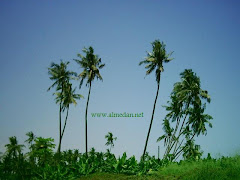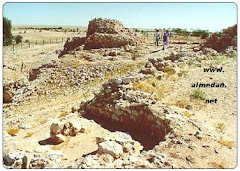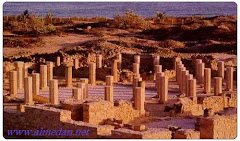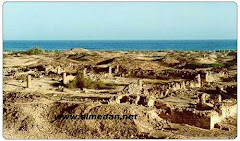 Salalah Distance from Muscat - 1030 kmAverage drive time - 12 hours by road, (1 hour by flight) How to get there - By buses / coaches belonging to the Oman National tourist Crporation (ONTC). Cars can be hired from Car rental agencies. Oman Air operates regular flights from Muscat to Salalah.
Salalah Distance from Muscat - 1030 kmAverage drive time - 12 hours by road, (1 hour by flight) How to get there - By buses / coaches belonging to the Oman National tourist Crporation (ONTC). Cars can be hired from Car rental agencies. Oman Air operates regular flights from Muscat to Salalah.Salalah is the biggest city in the Dhofar region and the second largest one in the Sultanate of Oman. It is known for its glorious history, heritage, rich culture, traditions, wonders of nature and as the traditional stronghold and birthplace of the Sultan, Qaboos bin Said. Today, it is also contributing towards the economic boom in the Sultanate of Oman.
Salalah, despite lying in the Arabian Desert, enjoys a temperate climate throughout most of the year. The period from late June to early September, known as the 'Khareef', or monsoon season, is one of the main reasons why the area is becoming a tourist 'haven'. Visitors from across the Persian Gulf flock to Salalah to enjoy the cool mists and avoid the harsh heat faced by the rest of the region during the same months. During this period every year the town's population nearly doubles with an influx of tourists, mainly from other parts of the Middle East. Various fairs (such as the 'Mahrajaan' at Ittin) are organized, as well as many events which seem to turn the monsoon season into a three month long celebration. The weather is cool and the atmosphere misty. The beaches and coastline are also major attractions for scuba divers and bird watchers.
Salalah is a city of antiquity, boasting both the ruins of a palace reputed to have belonged to the Queen of Sheba and the resting place of the biblical prophet Job in the nearby Jabal al Qamar. It is also the alleged resting place of the Prophet Emran, father of the Virgin Mary.
Salalah lies in Oman's southern Dhofar region. Known for its glorious history, heritage, rich culture, traditions and wonders of nature. Salalah today is also contributing towards the economic boom in the Sultanate of Oman. Spread along the coast, Salalah is the most densely populated city in the Dhofar region. It has a modern port, hospitals, schools, colleges and a wide range of accommodation for both short and long staying visitors.
Nestled in the southern region of Oman, Salalah has the benifit of the annual Indian monsoon: locally known as the Khareef. This monsoon, which extends from early June to mid September, transforms the countryside into a veritable garden with tumbling waterfalls and meandering streams. The Khareef season is a good time to visit Salalah. In July and August the government plays host for the annual Khareef Festival, a cultural highlight of the season. Salalah is steeped in myths and legends that date back to biblical times. In the Jebel Qara can be found the tomb of the Prophet Ayoub, better known as Job of the Old Testament. In Khawr Rhori lie the ruins of the palace reputed to be that of the Queen of Sheba. In the surrounding countryside on the flanks of the jebels grows the Boswellia sacra better known for the sap it produces: Frankincense. Frankincense, of course, is best known to Christians as one of the gifts of the Magi in Nativity story. In all probability the Frankincense that was a gift to the baby Jesus came from Oman as the Boswellia sacra tree grows no where else. For most of the year, the unspoiled beaches of Salalah are ideal for scuba diving, canoeing, sailing, jet skiing and diving. The marshy khawrs along the coast line are sanctuaries to a broad variety of migrating birds turning the region into a bird watchers paradise. But during the summer Salalah is easily Oman's coolest destination to visit during the Khareef with its crisp unpolluted air, cool misty clime, high rolling seas and leafy ambiance. Less than half an hour's drive from Salalah is Ain Razat, a picnic spot with springs, hills, gardens and streams. Nearby is the equally resplendent Ain Sahanawt. Seventy kilo- meters east of Salalah lies Mirbat, famous for Bin Ali's tomb (Bin Ali was revered in the early days of Islam as a sage and holy man.). Taqah, 36kms from Salalah is a picturesque, quaint village. The fort at Taqah goes back several hundred years and is well stocked with authentic decorations and appointments. Rising high above the coast is the Jebel Samhan plateau, the highest point in Dhofar at 1800 meters. Here you can find the hanging valley of Wadi Dirbat which is impressive in full flood. Further into the jebels is Tawi Attir (the hole of the birds), a natural sink hole over 100 metres wide and 250 metres deep. Nestled in a hidden valley is the Baobab Forest with huge bulbous trees, one tree over 2000 years old and 30 feet in diameter at its base. To the west of Salalah are many stretches of beautiful beaches. One of the most popular of these is Mughsayl where you can find unusual blow holes in the rocky shelf close to the shore. These holes display dramatic bursts of water and foam sometimes reaching 50 feet in the air. Further to the west close to the Yemen border lies the town of Rakhyut and is a pleasant spot for picnic and swim in the ocean. To the north of Salalah is the region known as the Nejd. This is a barren desolate area that is actually the southern fringe of the R'ub Al Khali. Here you find sweeping sand dunes and parched wadis. Lying 175 km north of Salalah is the remote village of Shisr. Here in the early nineties, with the help of satellite imagery from the space shuttle, explorers found what they believe to be the lost city of Ubar. Called by T. E. Lawrance (of Arabia) as the "Atlantis of the sands", Ubar was once considered to be the trading centre for frankincense before it was buried in the rising dunes.
Mughsayl Beach 40 kilometers west of Salalah.
Know for its beautiful beach, Blow Holes, stunning sea views and jagged cliffs and mountains. The Mughsayl Beach Tourist Restaurant located by the beach, offers visitors an international menu and water sports.
Prophet's Emran's Tomb Located near the Clock Tower.
The tomb of Prophet Emran is an extraordinary site to visit. It is around 30 meters long. Prophet Emran was the father of Moses, a famous biblical prophet.
Frankincense trail
The Frankincense trail are excavation sites protected by UNESCO and marked as under the World Heritage Sites. The Frankincense trail can be visited at Al Balid - downtown Salalah, at Khor Rohri, 37 kilometers from Salalah and Ubar at Shisr - believed to be the site of the Lost City, the Atlantis of Arabia discovered by the famous explorer, Wilfred Thesiger.
The Magic Road Believe it or not …
The Magic Road Believe it or not …
This road is a dirt track that lies on to your left when you hit the road from Taqha to Mirbat. The road leads to a short drive down a hill on an elevated dirt-trail. When you reach the base of the trail, you have to switch off your engine and put the gear into "neutral". Keep your foot on the brake lightly to "regulate" your speed when the anti-gravity thingy kicks in..!!!! Here's what happens: your vehicle instead of rolling down the slope begins to roll back UP hill.
By plane Oman Air flies from Muscat to Salalah at least twice a week. The flight takes roughly 90 minutes. The same carrier flies from Dubai to Salalah, with the flight taking some 2 hours.There are direct flights to indian cities of Kozhikode and Kochi.
By car It is possible to drive from Muscat to Salalah. The trip takes roughly 12 hours (although there are numerous places worth a detour en route).
By bus There are daily buses between all Omani cities, very cheap compared to the cost of taxis, airfare, etc. In February 2006 Muscat-Salalah was about $12 US--it's a 12 hour trip.
ToursOman Holidays is a specialised tour operator in Oman approved by the Oman Ministry of Tourism. The company, whose management have over a decade’s experience of tourism in Oman, specialize in interpretive guided cultural tours throughout the country.Also Maalem Majan Tours is a specialised tour operator in Oman as well approved by the Oman Ministry of Tourism, offering facinating tailor-made/package tours for individuals/groups with Omani hospitality. Many people still think that the Arabian Peninsula is an extended desert, baking in high temperatures, especially in the summer.However, this thought doesn't reflect the whole truth, and visitors are often very surprised when they come to Dhofar Province. There should be an exception to every rule, and Dhofar Province is the exception here. Dhofar Province lies in Southern Oman, on the eastern border of Yemen. Its area covers 99,300 sq km and has a population of 215,960 according to the 2003 census. The largest town in the region is Salalah. Historically, it was the chief source of frankincense in the world. However, its frankincense is now mostly used locally. Dhofar has been the traditional homeland of many non-Arab tribes whose people speak a variety of South Arabian Semitic languages.From late June to early September, Dhofar is influenced every year by the monsoon that comes from the Indian Ocean, causing a big change in climate, known as the 'Khareef' season. As a result of the constant light rain, the terrain turns lush and green, and remains green for some time afterwards, until the vegetation slowly loses its moisture. This makes Dhofar a natural resort for the Gulf and neighboring countries, whose people who wish to escape from the rising summer temperatures and high humidity.The province is divided administratively into 10 cities which are; Salalah, Thamrait, Taqa, Mirbat, Sadah, Rakhyut, Dhalkoot, Sheleem and Al Halaniat Islands, Muqshen, and Al Mazionah.
ToursOman Holidays is a specialised tour operator in Oman approved by the Oman Ministry of Tourism. The company, whose management have over a decade’s experience of tourism in Oman, specialize in interpretive guided cultural tours throughout the country.Also Maalem Majan Tours is a specialised tour operator in Oman as well approved by the Oman Ministry of Tourism, offering facinating tailor-made/package tours for individuals/groups with Omani hospitality. Many people still think that the Arabian Peninsula is an extended desert, baking in high temperatures, especially in the summer.However, this thought doesn't reflect the whole truth, and visitors are often very surprised when they come to Dhofar Province. There should be an exception to every rule, and Dhofar Province is the exception here. Dhofar Province lies in Southern Oman, on the eastern border of Yemen. Its area covers 99,300 sq km and has a population of 215,960 according to the 2003 census. The largest town in the region is Salalah. Historically, it was the chief source of frankincense in the world. However, its frankincense is now mostly used locally. Dhofar has been the traditional homeland of many non-Arab tribes whose people speak a variety of South Arabian Semitic languages.From late June to early September, Dhofar is influenced every year by the monsoon that comes from the Indian Ocean, causing a big change in climate, known as the 'Khareef' season. As a result of the constant light rain, the terrain turns lush and green, and remains green for some time afterwards, until the vegetation slowly loses its moisture. This makes Dhofar a natural resort for the Gulf and neighboring countries, whose people who wish to escape from the rising summer temperatures and high humidity.The province is divided administratively into 10 cities which are; Salalah, Thamrait, Taqa, Mirbat, Sadah, Rakhyut, Dhalkoot, Sheleem and Al Halaniat Islands, Muqshen, and Al Mazionah.
If you have any quation or command Please email me at:alshanfarimariam@gmail.com














1 comment:
I enjoy visiting Salalah as you can see in my blog http://blog.omanholiday.co.uk - hope there is a good Khareef - the rains have started early in Delhi
Post a Comment